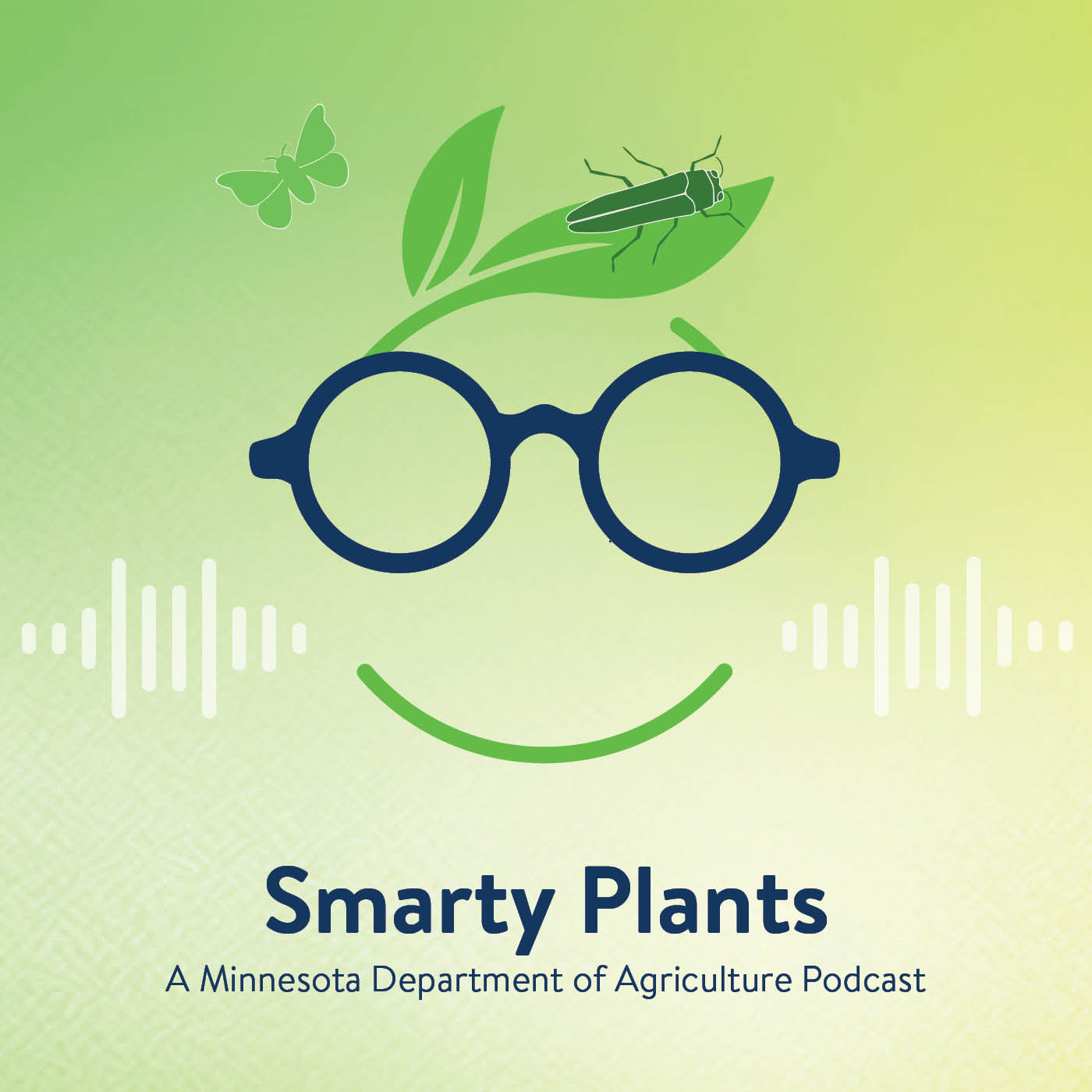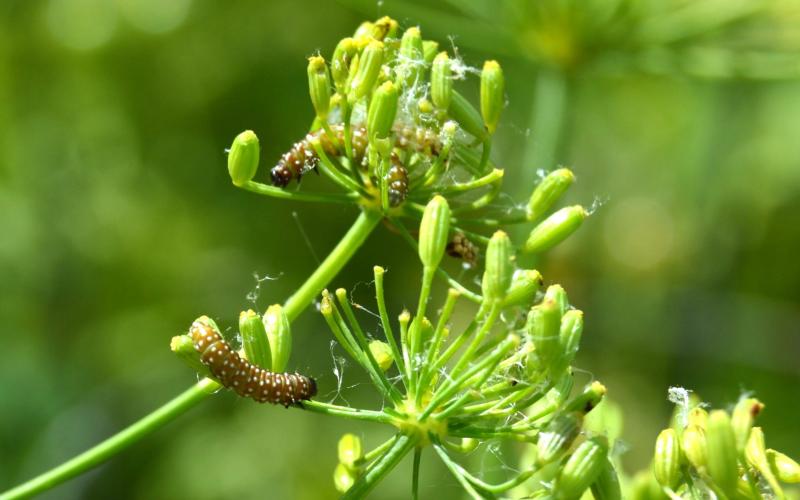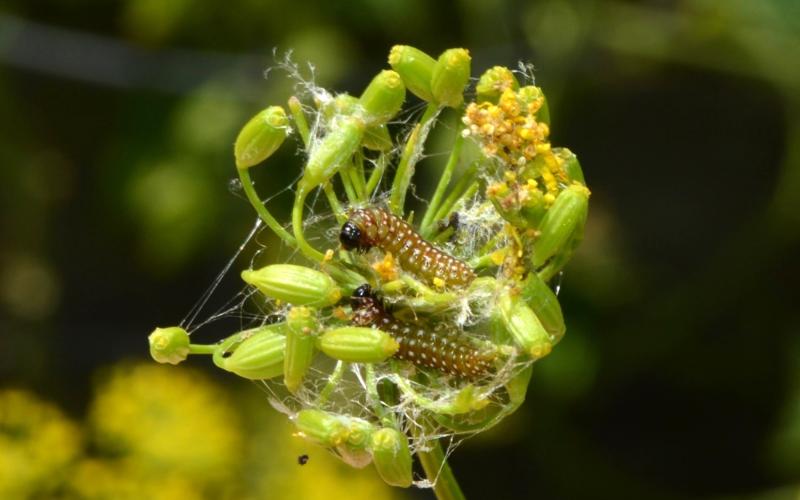Scientific name: Depressaria depressana
Native range: Western Europe through Russia to China.
At Risk
Plants in the parsley family are at risk. The larvae of the purple carrot-seed moth feed on the flowers and unripe seeds of several members of this plant family. Primary host plants include anise (Pimpinella), carraway, carrot (Daucus carota), celery, coriander, cow parsnip, cumin (Cuminum cyminum), dill, fennel, parsley, and parsnip (Pastinaca).
Distribution
The purple carrot-seed moth was first discovered in North America in 2008. Since then, tt has been documented in southern Canada, as well as Illinois, Indiana, and and Michigan. Most recently, it was discovered in Wisconsin in 2018 and Iowa in 2020. the first report of this species in Minnesota occurred in July 2022.
Biology
Purple carrot-seed moth caterpillars feed on the flowers of host plants and they tie floral parts together with webbing. This damage can make herbs like dill unusable. Caterpillars are typically present when the host plants are flowering and going to seed.
Purple carrot-seed moths complete their development within the webbing, and adult moths emerge shortly afterward.
Identification
Purple carrot-seed moth caterpillars are small (3/8 inch long), and they are greenish-red with distinctive white spots on each body segment.
Adult moths are also small (around 3/8 inch long) and have purple-grey to brownish wings that they hold folded back along their body when not in flight. A light tan or cream-colored patch is visible near the head.
Additional pictures of purple carrot-seed moths can be viewed on the BugGuide webpage.
Regulatory Status: Non-Regulated
There are currently no federal, state, or local regulations for the purple carrot-seed moth.
What Can I Do?
Contact the MDA via Report a Pest if you suspect an infestation of purple carrot-seed moth in Minnesota.
Smarty Plants Podcast

Discover Smarty Plants, the Minnesota Department of Agriculture's podcast that digs into the fascinating world of invasive species. Join expert guests as they share insights and solutions to protect our environment and agricultural resources. Visit Smarty Plants and start listening today.



